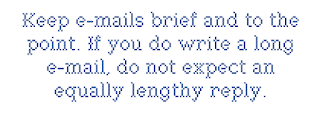Reading Takeaways (10/4)
 |
| Source: qimono, pixabay.com |
Last semester I was observing a 3rd and 4th grade class doing choice-based art. Various materials centers were open around the room, and many kids went straight to the center called "Inventor's Workshop." This center contains everything from recycled objects (toilet paper rolls, cardboard) and craft materials (popsicle sticks, wooden pieces) to found objects (scrabble tiles, toy parts). The students got to basically create anything they wanted with these materials, so while one student was creating a police car out of popsicle sticks, wooden wheels, and paint, another student was creating an abstract sculpture with almost every material he could find at the Inventor's Workshop. The students were so engaged that they worked up until the last minute of class, and the teacher barely had to step in.
I also remember being in an arts camp when I was in middle school where we had to bring in old pieces of technology to take apart. I brought in an old toaster, and we used tools to dismantle our objects. In the process, we learned how these technologies worked but then were instructed to use the parts and create a new invention. I remember having so much fun taking something apart and putting it back together again, and it's easy to find discarded technologies at thrift stores or around the house. I would love to include an invention project in my curriculum when I become a teacher, and it can be adapted for lower or higher grade levels.
The reading also talked about introducing technology by using familiar materials in unfamiliar ways. I liked the idea of squishy circuits and conductive paint to get younger kids engaged in circuitry. Using dough, a material similar to play-doh or clay that they may already have experience in, makes starting to learn about electricity and circuits more engaging and accessible. It also shows how even complex concepts can be introduced to kids at an early age. When they're introduced to these materials and processes when they're young, they can continue to build on them in the future in increasingly complex ways.
In Peppler's article "New Opportunities for Interest-Driven Arts Learning in a Digital Age," she also talks about the intimidation that might initially come with new media and technology. She accurately points out that when we typically think of coding, we often picture computer programs with users typing endless lines of equations on a blank screen. Now, other computer software and apps make creative coding more accessible, especially for children, and scaffold the learning. I just recently incorporated Scratch into a curriculum designing assignment and decided to try out Scratch Jr. on the iPad to experiment with it myself. I was surprised with how much you could do on it! Between coding movements for a character, editing the character, and changing and drawing backgrounds, there is a lot of play involved.

Comments
Post a Comment